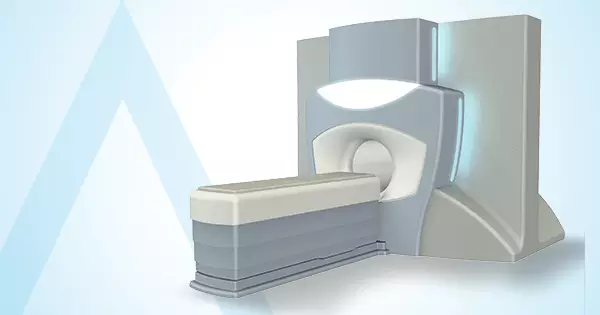Problems of foot health are diagnosed and treated at podiatry units of Acıbadem Healthcare Group. Medical foot care is also available at these units.
Foot care is among one of the most important issues for diabetic people. Because feet carry the entire body weight under tremendous pressure and they are the organs that are most prone to injury.
Most problems with feet are caused by improper or insufficient foot care and wrong types of shoes. The most common causes of wounds in feet are improperly clipped nails, ingrown nails, calluses, shoe pinch, burn and fungal infection in toe webs and nails.
Pain and warmth may develop and tactile sensation may impair, as nerves of legs and feet dysfunction, if diabetes mellitus is left untreated or cannot be controlled. Therefore, traumas and injuries cannot be recognized; a wound may have already be infected, when it is discovered, making the treatment extremely more difficult.
Moreover, inability to feel foreign objects pricking the skin such as screws and needles can lead to infections. Folds in socks, injuries caused by shoes, small sand grains in shoes and similar objects can cause irritation and minor injuries in feet.
However, the wound progresses, as no pain is felt due to sensorial deficit. Burns are also likely, as diabetic people put their feet close to heaters to manage complaint of cold feet. Patients can recognize the condition, when the foot gets infected and swells, as ingrown nail does not cause pain due to nervous dysfunction.
Diabetic patients should know their feet are at risk and swiftly start treatment if they recognize any one of following symptoms.
- Dry skin in feet,
- Fungal infection in toe webs,
- Pustules and blisters in feet,
- Callus,
- Cold feet, sensorial deficit, impaired tactile sensation,
- Thickening, deformity or ingrowth of nails in smokers,
What diabetic people should do for foot care;
- Feet should be washed with lukewarm water and dried with a soft towel, including toe webs,
- Feet should be moisturized with diabetic foot creams,
- One absolutely should not walk barefoot at home or outdoors; shoes and slippers should not be too tight or loose.
- Feet should be checked with a mirror for risk of any potential lacerations, wounds and blisters.
- Calluses and dead tissue should not be shaved off; acidic callus bands should not be used at any way; and callus care should be given by experts,
- Cold feet should not be warmed before a heater or warm objects; instead, woolen socks should be worn.
- Toe nails should be cut such as blunt ends are rounded,
- Inside of shoes should be thoroughly checked before wearing,
- Shoes should not be worn without socks,
- Socks should be cotton or wool; they should be of soft texture and not too tight,
- Shoes should be comfortable and soft with leather soles and no stitches,
- Women should wear closed-toed shoes in summer; flip-flops should be avoided,
- Relatives of diabetic people with visual impairment should be educated on these issues.
What Should be Considered When Choosing Shoes and Socks for People with Diabetic Foot?
Cotton socks without stitches and tight sleeve bands should be preferred. Socks should be in light colors so that bleeding due to pinching and injury can be noticed.
Shoes should not pinch feet and they should be flexible enough to fit shape of foot. Women should wear closed-toed shoes in summer; flip-flops should be avoided,
How Should Wound Treatment / Dressing be for Diabetic Foot?
Wounds secondary to diabetic foot should be cared and dressed by diabetes nurse as instructed by a diabetes physician.
What is Ingrown Nail?
Deformities in nail and/or nail bed due to various reasons may hinder growth of nail, resulting impaction into flesh, and the condition, called ingrown nail, leads to pain, redness and infection.
How Does Ingrown Nail Occur?
- Wrong pedicure applications,
- Cutting nails deeply or sharply,
- Trauma to foot or nail,
- Hereditary ingrown nail
- Excessive weight gain due to pregnancy, etc.,
- Heavily exercising,
- High-heeled shoes with narrow tips; tight socks
- Fungal infection in nail and thickened nail,
Treatment of Ingrown Nail
Wire, band or combined treatment options may be used depending on condition of the nail. The ingrown nail with deteriorated bed is elevated by these methods to ensure natural growth. The problematic nail is followed up periodically. As the nail grows in a controlled manner, the ingrowing pattern is corrected and the nail bed is healed.
One can resume activities of daily life without any pain, can wear any shoe, take shower and exercise after wire or band is placed.
Improper procedures carried out by others who are not healthcare professionals or podiatrist may offer momentary relief, but they do not solve the problem or they may even make the problem worse.
Extraction of nail should the last-line treatment option due to its cost and adverse effects on daily life. Nail growth and nail bed should be checked periodically by a podiatrist at Foot Health/Care departments, even if the nail is extracted.
How is Ingrown Nail Prevented?
- Choosing correct shoes,
- Nails should be cut properly,
- Trauma to feet should be prevented
- A Podiatrist should be visited immediately, once any symptom is recognized.
What is Medical Foot Care?
First, the foot is examined in medical foot care; the patient specifies complaints regarding feet and questions are asked on overall health and daily life; patient’s shoes are checked; next, the patient is referred to gait analysis to identify stepping disorders/deformities; the patient is assessed to determine whether orthopedic sole is required and an appropriate treatment plan is developed.
Dry system is used for medical foot/nail care; toenails are properly clipped using sterile tools; dead tissue is removed; and viable tissue is untouched.
Studies show that approximately 85 out of 100 people have a type of foot problem. Bone and joint deformities that develop in feet with gradual changes cause ingrown nail, callus, warts, fungal infections in toenail and skin and excessive perspiration as well as malodor. Regular care may help prevention before problems occur or progress.
How Does Medical Foot Care Differ From Pedicure?
The equipment used in coiffeur and pedicure centers is usually disinfected rather than sterilization at necessary standards. Disinfection only neutralizes microorganisms, while sterilization does not allow survival of even one microorganism.
Foot care tools used at Acıbadem Hospitals are sterilized following sterilization standards that apply to surgical tools used in operating theaters and they are packaged individually. Infection may spread in manicure (warts, fungus, hepatitis B, hepatitis C, HIV), if sterilization cannot be ensured in all aspects.
Feet are submerged in water before pedicure and dead tissue is removed along with living tissue once foot swells in the water. The body over-produces tissue to replace the removed living tissue and therefore, this vicious cycle requires pedicure every 2 weeks. Dry devices are used for medical foot care;
only dead skin is removed and viable tissues are left untouched. Thus, monthly foot care may help all problems.
Relevant physicians (Orthopedist, Dermatologist) work in cooperation with podiatrists with higher education background to provide patients with treatments that fit anatomy of patient’s feet and nail at Podiatry Units of Acıbadem Hospitals.
This type of fungal infection develops when fungal skin infections spread to nail, resulting in deformity of nail and sometimes malodor.
Nail fungus is contagious; using bed sheets, towels or slippers of people with nail fungus and walking barefoot in public areas (mosque, poolside) may cause the spread of fungal infection.
Toenail thickens, yellow/brown discoloration develops and abnormal lines and deformities occur, as the nail fungus progresses. Besides cosmetic concerns, it may cause pain close to the nail bed. Fungal infection may become chronic, if it progresses to the nail root.
What are underlying causes of nail fungus?
- Manicure and pedicure in unhygienic facilities using improperly sterilized equipment,
- Humid environment due to excessive perspiration of feet
- Injury, compression and trauma to toenails,
- Wearing tight shoes that pinch feet,
- Public areas such as dressing rooms, swimming pools and showers,
- Wearing same shoes every day without ventilating them.
People at Risk of Toenail Fungus:
- Diabetic people,
- People with circulation disorder,
- Those with weak immune system,
- Those with fungal infection in skin of feet,
- People with heavy perspiration of or continuously moist feet,
- People who are prone to feet trauma, such as athletes, dancers, military personnel
The thickened fungal infection area is removed to expose healthy nail tissue in treatment of nail fungus at Podiatry units. Surface of toenail is covered with a special gel for both preventing health of the toenail and creating healthy and aesthetically pleasing appearance. Periodical care helps growth of toenail and treatment of fungal infection.
Medications for toenail fungus cannot be used for long term, as they affect liver adversely. Therefore, a side effect-free, successful and quick treatment strictly requires cooperation of dermatologist and podiatrist to ensure smooth healing and elimination of toenail fungus.
Doctors
-
![Podolog]() Podolog
podology (Foot Health)
Podolog
podology (Foot Health)
Book an Appointment
-
![Podolog]() Podolog
podology (Foot Health)
Podolog
podology (Foot Health)
Book an Appointment
-
![Podolog]() Podolog
podology (Foot Health)
Podolog
podology (Foot Health)
Book an Appointment
-
![Podolog]() Podolog
podology (Foot Health)
Podolog
podology (Foot Health)
Book an Appointment
-
![Podolog]() Podolog
podology (Foot Health)
Podolog
podology (Foot Health)
Book an Appointment
-
![Podolog]() Podolog
podology (Foot Health)
Podolog
podology (Foot Health)
Book an Appointment
-
![Podolog]() Podolog
podology (Foot Health)
Podolog
podology (Foot Health)
Book an Appointment
-
![Podolog]() Podolog
podology (Foot Health)
Podolog
podology (Foot Health)
Book an Appointment
Hospitals
-
![Altunizade Hospital]() Altunizade Hospital
Altunizade Hospital -
![Ataşehir Hospital]() Ataşehir Hospital
Ataşehir Hospital -
![Ataşehir Outpatient Clinic]() Ataşehir Outpatient Clinic
Ataşehir Outpatient Clinic -
![Bağdat Outpatient Clinic]() Bağdat Outpatient Clinic
Bağdat Outpatient Clinic -
![Bakırköy Hospital]() Bakırköy Hospital
Bakırköy Hospital -
![Bodrum Hospital]() Bodrum Hospital
Bodrum Hospital -
![Dr. Şinasi Can (Kadıköy) Hospital]() Dr. Şinasi Can (Kadıköy) Hospital
Dr. Şinasi Can (Kadıköy) Hospital -
![Etiler Outpatient Clinic]() Etiler Outpatient Clinic
Etiler Outpatient Clinic -
![International Hospital]() International Hospital
International Hospital
































